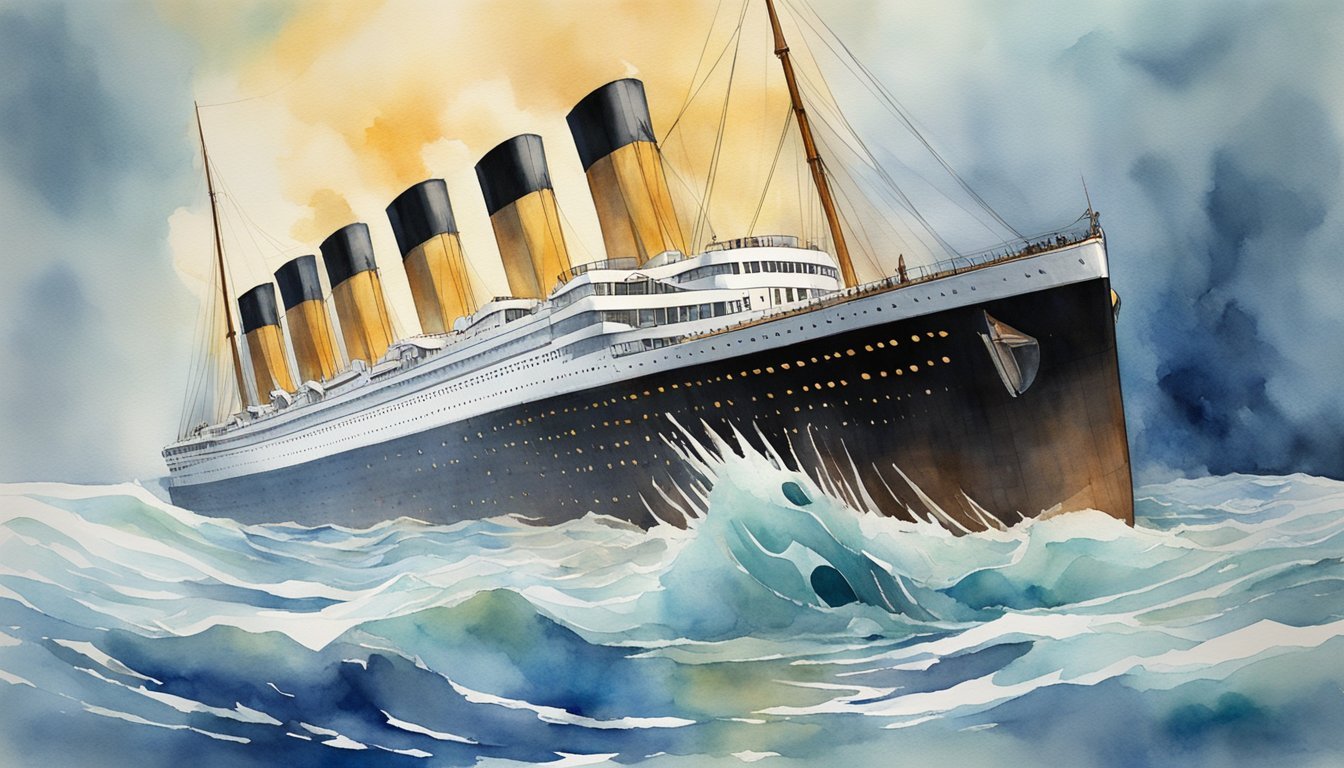Discovering the Titanic
The Titanic was a marvel of its era, designed to be both luxurious and powerful. Here, we take a journey from its inception to its tragic end.
The Ship’s Origins
The Titanic, officially known as RMS Titanic, was constructed in Belfast, Ireland by the White Star Line. Conceived to be the pinnacle of passenger ships, it was unmatched in opulence and size. The construction of the Titanic started in 1909, and it was completed three years later, representing the pinnacle of naval architecture at the time. Its lavish amenities and grandeur were meant to attract the wealthiest clients of the first class, while also accommodating second class and third class passengers.
The Maiden Voyage
On April 10, 1912, the Titanic left Southampton, England, on its highly anticipated maiden voyage, heading towards New York City. The ship was loaded with approximately 2,240 passengers and crew, each class enjoying different levels of luxury and comfort. The first class passengers indulged in exquisite dining rooms and elegant accommodations, while second and third class passengers were provided with amenities that surpassed those of similar classes on other ships.
The Fateful Collision
The Titanic struck an iceberg in the North Atlantic on the night of April 14, entering history as one of the most dramatic maritime disasters. Despite being designed to be the safest ship afloat with advanced safety features, the collision caused the “unsinkable” Titanic to sink within a few hours. This catastrophe led to the tragic loss of over 1,500 lives, largely due to a lack of sufficient lifeboats and an underestimation of the ship’s vulnerability.
List of passengers by class (approximate numbers):
- First Class: 325
- Second Class: 285
- Third Class: 706
- Crew: 885
Key dates:
- Construction Began: 1909
- Completion and Ready for Ocean: March 31, 1912
- Maiden Voyage Departure: April 10, 1912
- Collision with Iceberg: Night of April 14, 1912
Safety Features:
- Watertight compartments
- Advanced pumps
- Remote controlled watertight doors
The Legacy of the Titanic

The Titanic’s voyage remains an epic tale, interlacing stories of human ambition, tragedy, and the enduring quest for knowledge. Here’s a look at the aftermath and how the Titanic continues to captivate the world.
The Aftermath of the Tragedy
After the Titanic sank in the early hours of April 15, 1912, on its maiden voyage from Southampton to New York City, the world reeled from the sheer scope of the disaster. The White Star Line, the company that owned the Titanic, had to navigate the public outcry and the immediate needs of the survivors. Inquiries followed, aiming to understand how such an advanced vessel, believed to be “unsinkable,” could have been brought down by an iceberg. Regulations concerning ice patrols, lifeboats, and emergency protocols were revised and tightened as a direct consequence, influencing the safety standards of ocean liners to come. Respect for the survivors’ ordeal and the memory of those lost has since permeated the narrative of the Titanic.
Rediscovery and Remembrance
The remains of the Titanic, once thought to be lost forever, were rediscovered in 1985 by a team led by Oceanographer Robert Ballard. The wreckage, found on the ocean floor, reignited public interest and led to numerous expeditions aiming to understand more about the sinking and preserve this piece of history. The Titanic’s story has since inspired countless books, films, and exhibitions, each contributing to the remembrance of the disaster. Artifacts recovered from the site can now be seen in various museums, allowing visitors a poignant glimpse into the lives of those aboard. The sister ships of the Titanic, the Olympic and the Britannic, also add layers to Titanic facts, serving as benchmarks in maritime history before and after the tragedy. The Titanic’s legacy endures, woven into the very fabric of maritime history and cultural significance, a testament to human triumph and tragedy.

